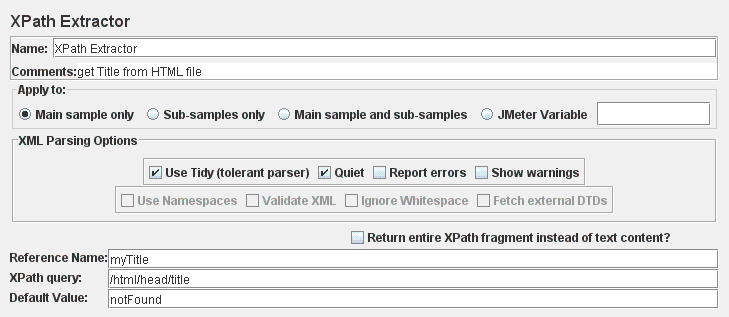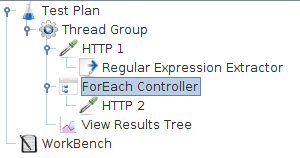set nocompatible
filetype off
set rtp+=~/.vim/bundle/vundle/
call vundle#rc()
Bundle 'gmarik/vundle'
""
"" General
""
Bundle 'MarcWeber/vim-addon-mw-utils'
Bundle 'tomtom/tlib_vim'
if executable('ack-grep')
let g:ackprg="ack-grep -H --nocolor --nogroup --column"
Bundle 'mileszs/ack.vim'
elseif executable('ack')
Bundle 'mileszs/ack.vim'
elseif executable('ag')
Bundle 'mileszs/ack.vim'
let g:ackprg = 'ag --nogroup --nocolor --column --smart-case'
endif
Bundle 'scrooloose/nerdtree'
Bundle 'jistr/vim-nerdtree-tabs'
Bundle 'tpope/vim-surround'
Bundle 'Raimondi/delimitMate'
Bundle 'kien/ctrlp.vim'
Bundle 'Lokaltog/vim-easymotion'
Bundle 'godlygeek/csapprox'
Bundle 'matchit.zip'
""
"" Themes and Colors
""
Bundle 'flazz/vim-colorschemes'
Bundle 'bling/vim-airline'
""
"" Programming
""
Bundle 'scrooloose/syntastic'
Bundle 'tpope/vim-fugitive'
Bundle 'airblade/vim-gitgutter'
Bundle 'mattn/webapi-vim'
Bundle 'mattn/gist-vim'
Bundle 'scrooloose/nerdcommenter'
Bundle 'godlygeek/tabular'
if executable('ctags')
Bundle 'majutsushi/tagbar'
endif
Bundle 'nathanaelkane/vim-indent-guides'
Bundle 'klen/python-mode'
Bundle 'python.vim'
Bundle 'python_match.vim'
Bundle 'pythoncomplete'
Bundle 'elzr/vim-json'
Bundle 'groenewege/vim-less'
Bundle 'pangloss/vim-javascript'
Bundle 'briancollins/vim-jst'
Bundle 'kchmck/vim-coffee-script'
Bundle 'derekwyatt/vim-scala'
Bundle 'derekwyatt/vim-sbt'
Bundle 'amirh/HTML-AutoCloseTag'
Bundle 'hail2u/vim-css3-syntax'
Bundle 'tpope/vim-haml'
Bundle 'mattn/zencoding-vim'
Bundle 'chrisbra/color_highlight'
Bundle 'tpope/vim-rails'
let g:rubycomplete_buffer_loading = 1
Bundle 'tpope/vim-cucumber'
Bundle 'quentindecock/vim-cucumber-align-pipes'
Bundle 'vim-ruby/vim-ruby'
Bundle 'tpope/vim-markdown'
Bundle 'Shougo/neocomplcache'
Bundle 'Shougo/neosnippet'
Bundle 'honza/vim-snippets'
filetype plugin indent on
"" Settings
let mapleader = ','
set background=dark
if filereadable(expand("~/.vim/bundle/vim-colorschemes/colors/ir_black.vim"))
colorscheme ir_black
endif
set history=700
set nu
syntax on
set hidden
set virtualedit=onemore
set showmatch
set cursorline
highlight clear SignColumn
set visualbell
set mouse=a
set mousehide
set autochdir
autocmd BufEnter * silent! lcd %:p:h
autocmd BufReadPost *
\ if line("'\"") > 1 && line("'\"") <= line("$") |
\ exe "normal! g`\"" |
\ endif
""
"" encoding
""
set encoding=utf-8
set fileencodings=utf-8,gbk,cp936,latin-1
set termencoding=utf-8
""
"" Paste
""
if has ('x') && has ('gui')
set clipboard=unnamedplus
elseif has ('gui')
set clipboard=unnamed
endif
set pastetoggle=<F12>
""
"" Status line
""
set showmode
if has('statusline')
set laststatus=2
set statusline=%<%f\
set statusline+=%w%h%m%r
set statusline+=%{fugitive#statusline()}
set statusline+=\ [%{&ff}/%Y]
set statusline+=\ [%{getcwd()}]
set statusline+=%=%-14.(%l,%c%V%)\ %p%%
endif
if has('cmdline_info')
set ruler
set rulerformat=%30(%=\:buf%n%y%m%r%w\ %l,%c%V\ %P%)
set showcmd
endif
""
"" Backup
""
set nobackup
set nowb
set noswapfile
if has('persistent_undo')
set undodir=~/.vim/undofiles
set undofile
set undolevels=1000
set undoreload=10000
endif
""
"" Indent
""
set smartindent
set autoindent
""
"" Whitespace and Tab
""
set nowrap
set smarttab
set tabstop=2
set shiftwidth=2
set expandtab
set backspace=indent,eol,start
""
"" List
""
set list
set listchars=tab:›\ ,trail:•,extends:#,nbsp:.
""
"" Searching
""
set hlsearch
set incsearch
set ignorecase
set smartcase
""
"" Wild settings
""
set wildmode=list:longest,full
set wildmenu
set wildignore+=*.o,*.out,*.obj,.git,*.rbc,*.rbo,*.class,.svn,*.gem
set wildignore+=*.zip,*.tar.gz,*.tar.bz2,*.rar,*.tar.xz
set wildignore+=*/vendor/gems/*,*/vendor/cache/*,*/.bundle/*,*/.sass-cache/*
set wildignore+=*.swp,*~,._*,*.bak
""
"" Vundles settings
""
"" airline
""
set t_Co=256
let g:airline_powerline_fonts=1
let g:airline_theme='light'
let g:airline_left_sep = '»'
let g:airline_left_sep = '▶'
let g:airline_right_sep = '«'
let g:airline_right_sep = '◀'
let g:airline_linecolumn_prefix = '␊ '
let g:airline_linecolumn_prefix = ' '
let g:airline_linecolumn_prefix = '¶ '
let g:airline_fugitive_prefix = '⎇ '
let g:airline_paste_symbol = 'ρ'
let g:airline_paste_symbol = 'Þ'
let g:airline_paste_symbol = '∥'
"" NerdTree
""
map <C-e> :NERDTreeToggle<CR>:NERDTreeMirror<CR>
map <leader>e :NERDTreeFind<CR>
nmap <leader>nt :NERDTreeFind<CR>
let NERDTreeShowBookmarks=1
let NERDTreeIgnore=['\.pyc', '\~$', '\.swo$', '\.swp$', '\.git', '\.hg', '\.svn', '\.bzr']
let NERDTreeChDirMode=0
let NERDTreeQuitOnOpen=1
let NERDTreeMouseMode=2
let NERDTreeShowHidden=1
let NERDTreeKeepTreeInNewTab=1
let g:nerdtree_tabs_open_on_gui_startup=0
"" ctrlp
""
let g:ctrlp_working_path_mode = 'ra'
nnoremap <silent> <leader>f :CtrlPBuffer<CR>
let g:ctrlp_custom_ignore = {
\ 'dir': '\.git$\|\.hg$\|\.svn$',
\ 'file': '\.exe$\|\.so$\|\.dll$\|\.pyc$' }
" On Windows use "dir
if has('win32') || has('win64')
let g:ctrlp_user_command = {
\ 'types': {
\ 1: ['.git', 'cd %s && git ls-files . --cached --exclude-standard --others'],
\ 2: ['.hg', 'hg --cwd %s locate -I .'],
\ },
\ 'fallback': 'dir %s /-n /b /s /a-d'
\ }
else
let g:ctrlp_user_command = {
\ 'types': {
\ 1: ['.git', 'cd %s && git ls-files . --cached --exclude-standard --others'],
\ 2: ['.hg', 'hg --cwd %s locate -I .'],
\ },
\ 'fallback': 'find %s -type f'
\ }
endif
"" TagBar
""
nnoremap <silent> <leader>tt :TagbarToggle<CR>
"" Indent guide
""
let g:indent_guides_start_level = 2
let g:indent_guides_guide_size = 1
let g:indent_guides_enable_on_vim_startup = 1
let g:indent_guides_auto_colors = 1
""
"" Color
let g:colorizer_auto_color = 1
let g:colorizer_auto_filetype='css,html'
let g:colorizer_skip_comments = 1
let g:colorizer_colornames = 0
""
"" OmniComplete
if has("autocmd") && exists("+omnifunc")
autocmd Filetype *
\if &omnifunc == "" |
\setlocal omnifunc=syntaxcomplete#Complete |
\endif
endif
hi Pmenu guifg=#000000 guibg=#F8F8F8 ctermfg=black ctermbg=Lightgray
hi PmenuSbar guifg=#8A95A7 guibg=#F8F8F8 gui=NONE ctermfg=darkcyan ctermbg=lightgray cterm=NONE
hi PmenuThumb guifg=#F8F8F8 guibg=#8A95A7 gui=NONE ctermfg=lightgray ctermbg=darkcyan cterm=NONE
au CursorMovedI,InsertLeave * if pumvisible() == 0|silent! pclose|endif
set completeopt=menu,preview,longest
"" Neocomplcache
""
let g:acp_enableAtStartup = 0
let g:neocomplcache_enable_at_startup = 1
let g:neocomplcache_enable_smart_case = 1
let g:neocomplcache_min_syntax_length = 3
imap <C-k> <Plug>(neosnippet_expand_or_jump)
smap <C-k> <Plug>(neosnippet_expand_or_jump)
imap <expr><TAB> neosnippet#jumpable() ? "\<Plug>(neosnippet_expand_or_jump)" : pumvisible() ? "\<C-n>" : "\<TAB>"
smap <expr><TAB> neosnippet#jumpable() ? "\<Plug>(neosnippet_expand_or_jump)" : "\<TAB>"
if has('conceal')
set conceallevel=2 concealcursor=i
endif
let g:neocomplcache_dictionary_filetype_lists = {
\ 'default' : '',
\ 'vimshell' : $HOME.'/.vimshell_hist',
\ 'scheme' : $HOME.'/.gosh_completions'
\ }
inoremap <expr><C-g> neocomplcache#undo_completion()
inoremap <expr><C-l> neocomplcache#complete_common_string()
inoremap <silent> <CR> <C-r>=<SID>my_cr_function()<CR>
function! s:my_cr_function()
return neocomplcache#smart_close_popup() . "\<CR>"
"return pumvisible() ? neocomplcache#close_popup() : "\<CR>
endfunction
" inoremap <expr><TAB> pumvisible() ? "\<C-n>" : "\<TAB>
inoremap <expr><C-h> neocomplcache#smart_close_popup()."\<C-h>"
inoremap <expr><BS> neocomplcache#smart_close_popup()."\<C-h>"
inoremap <expr><C-y> neocomplcache#close_popup()
inoremap <expr><C-e> neocomplcache#cancel_popup()
autocmd FileType css setlocal omnifunc=csscomplete#CompleteCSS
autocmd FileType html,markdown setlocal omnifunc=htmlcomplete#CompleteTags
autocmd FileType javascript setlocal omnifunc=javascriptcomplete#CompleteJS
autocmd FileType python setlocal omnifunc=pythoncomplete#Complete
autocmd FileType xml setlocal omnifunc=xmlcomplete#CompleteTags
autocmd FileType haskell setlocal omnifunc=necoghc#omnifunc
if !exists('g:neocomplcache_omni_patterns')
let g:neocomplcache_omni_patterns = {}
endif
let g:neocomplcache_omni_patterns.php = '[^. \t]->\h\w*\|\h\w*::'
let g:neocomplcache_omni_patterns.perl = '\h\w*->\h\w*\|\h\w*::'
let g:neocomplcache_omni_patterns.c = '[^.[:digit:] *\t]\%(\.\|->\)'
let g:neocomplcache_omni_patterns.cpp = '[^.[:digit:] *\t]\%(\.\|->\)\|\h\w*::'
let g:neocomplcache_omni_patterns.ruby = '[^. *\t]\.\h\w*\|\h\w*::'
let g:neosnippet#enable_snipmate_compatibility = 1
let g:neosnippet#snippets_directory='~/.vim/bundle/vim-snippets/snippets'
set completeopt-=preview
""
"" Function
""
function! StripTrailingWhitespace()
let _s=@/
let l = line(".")
let c = col(".")
%s/\s\+$//e
let @/=_s
call cursor(l, c)
endfunction
autocmd FileType c,cpp,java,go,php,javascript,python,twig,xml,yml autocmd BufWritePre <buffer> call StripTrailingWhitespace()
""
"" Key mapping
""
nmap <leader>jt <Esc>:%!python -m json.tool<CR><Esc>:set filetype=json<CR>
cmap w!! w !sudo tee % >/dev/null








